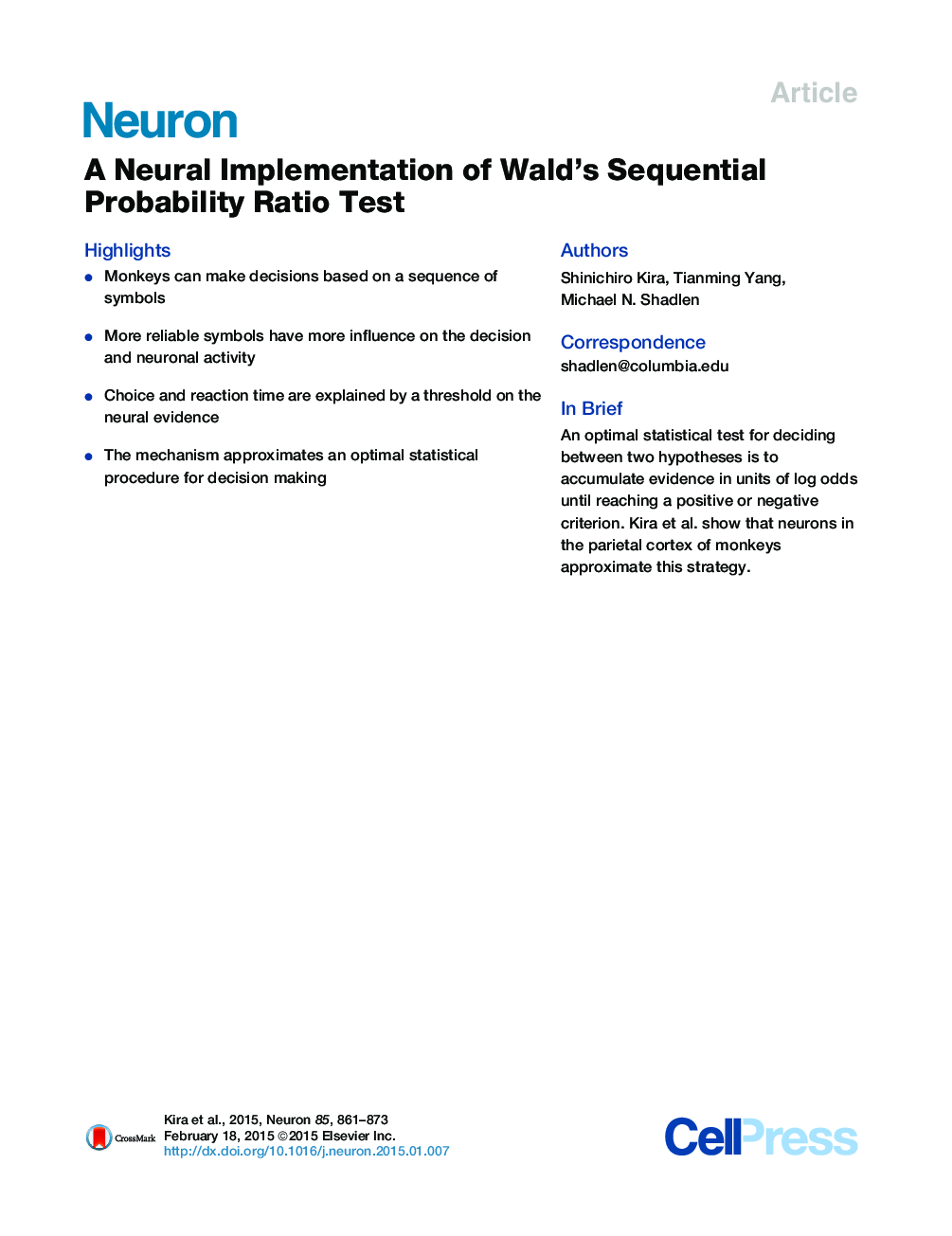| Article ID | Journal | Published Year | Pages | File Type |
|---|---|---|---|---|
| 4320897 | Neuron | 2015 | 13 Pages |
•Monkeys can make decisions based on a sequence of symbols•More reliable symbols have more influence on the decision and neuronal activity•Choice and reaction time are explained by a threshold on the neural evidence•The mechanism approximates an optimal statistical procedure for decision making
SummaryDifficult decisions often require evaluation of samples of evidence acquired sequentially. A sensible strategy is to accumulate evidence, weighted by its reliability, until sufficient support is attained. An optimal statistical approach would accumulate evidence in units of logarithms of likelihood ratios (logLR) to a desired level. Studies of perceptual decisions suggest that the brain approximates an analogous procedure, but a direct test of accumulation, in units of logLR, to a threshold in units of cumulative logLR is lacking. We trained rhesus monkeys to make decisions based on a sequence of evanescent, visual cues assigned different logLR, hence different reliability. Firing rates of neurons in the lateral intraparietal area (LIP) reflected the accumulation of logLR and reached a stereotyped level before the monkeys committed to a decision. The monkeys’ choices and reaction times, including their variability, were explained by LIP activity in the context of accumulation of logLR to a threshold.
